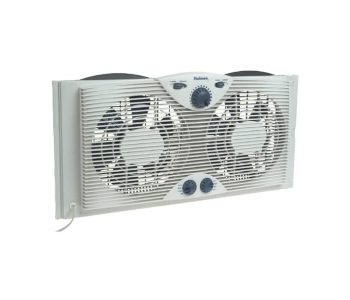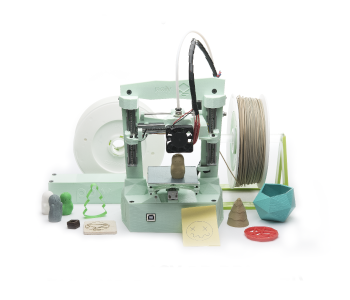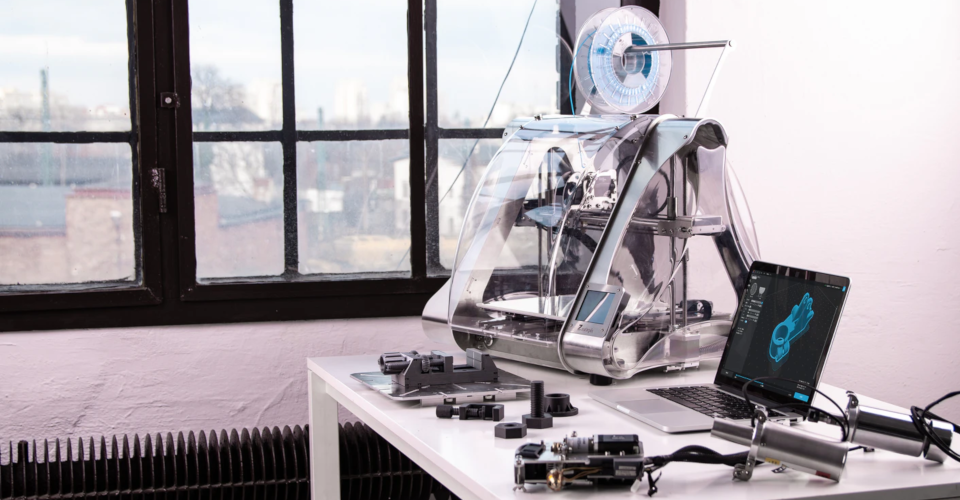Where Should You Place Your 3D Printer?
So, you’re buying (or you already bought) a new 3D printer. Hopefully, you have already planned where you’re going to put it. Unlike other electronics, 3D printers can be large, noisy, and require accessories that will take up a lot of space.
Whether you’re 3D printing at home, at school, or in an office, choosing a proper location can avoid health hazards as well general irritation. What factors must you consider? Is it safe to place a 3D printer on the floor or must it be on top of a desk?
Factors to consider when choosing a spot for your 3D printer
Printing time
It is not uncommon for a 3D printing job to take between 12 to 24 hours to finish. This does not even take into account the time spent in setting up the 3D printer, cleaning its components, and tweaking with slicer settings.
For this reason, do not expect that your 3D printer will only be running during the daytime and that you can turn it off before you go to sleep. 3D printing jobs can run well into the night. Unless you’re isolating it, you will have to get used to having a running 3D printer around you.
Noise
If you’re buying an FDM printer, one important thing you need to know about it is that it’s very noisy. This is caused by several moving parts such as the movement of the print head along the gantry and the rotation of the extruder gear. This noise is pretty relentless – there is barely a moment during a 3D printing project when it’s not going to bother you.
This is a factor to consider if you’re using a 3D printer at home or in a place where other people can get disturbed by the noise. Even if you use soft bushings and motor dampers, you’re bound to get complaints about the noise of a 3D printer unless it’s sufficiently isolated.
Fumes

Desktop 3D printing involves either melting a plastic material or triggering a chemical reaction to polymerize resin. Either way, the process will invariably release fumes and particles into the air. In some cases, these fumes can be very unpleasant. Even if there were no irritating fumes, inhaling the microparticles released by 3D printing cannot possibly be good for respiratory systems.
This is another reason to keep your 3D printer in an isolated room. Do not keep a 3D printer running in a room where people typically stay for long periods, such as in a bedroom or living room. This hazard also applies to pets. There have been cases of people developing conditions such as shortness of breath or pneumonia when they are regularly around 3D printers.
To avoid the buildup of fumes and microparticles, it is best to place the 3D printer in a room with good ventilation. You can achieve this with a powered window fan or by just having a few windows open.
Heat
If you’re working with an FDM printer, then the heat it gives off could be enough to influence the temperature of a room. This can be an issue in particularly hot regions. Heat retention is usually a good thing in 3D printing as it helps enhances adhesion and helps avoid issues such as warping. However, staying or working in a very hot room can get uncomfortable.
Keeping ambient conditions more tolerable is another benefit of having good ventilation in the room where you’re keeping your 3D printer. Just be careful that the drafts are not directed to your 3D printer, as excessive cooling can also be equally bad.
As the parts of a 3D printer can get very hot, make sure to not have anything flammable near or around it. This can include curtains or pieces of paper that can be blown by a draft into the printer.
Accessories
3D printing is a hobby that will notoriously have you buying lots of supplies and accessories. From cutting tools and adhesive tapes to dozens of spools of filament or resin bottles, you will inevitably need more and more space in your 3D printing area. This is something you may want to plan for when choosing a spot for your 3D printer.
A stable, level surface
Most people place 3D printers on a countertop or a desk. Others may elect to place it on the floor instead. Either way, you want to be sure that your 3D printer rests on a surface that is both stable and perfectly leveled.
3D printers give off a lot of vibration while running because of the movement of their stepper motors. You will want to make sure that the vibrations do not move the desk or countertop that the 3D printer is resting on. A wobbling work surface can cause the frames of the 3D printer to get misaligned over time and will eventually cause layer shifting issues.
Leveling is a key component in 3D printing. It is considered good practice to level the build plate of a 3D printer regularly. However, this assumes that the surface on which the 3D printer is sitting is also perfectly leveled.
Working space

Rarely is a 3D printing project considered finished when the 3D printer has stopped running. In most cases, there is still work to be done in the form of support removal, sanding the print smooth, and applying some paint to it. You will want sufficient space to do all of these.
Sanding can be a particularly problematic step. Although it may seem like a simple task, sanding grinds away at the surface of the plastic and releases ultrafine particles. Aside from posing respiratory hazards, the electrostatic nature of these particles makes them hard to clean. For this reason, we recommend sanding a finished 3D print near an exhaust fan to vent away all these ultrafine particles.
Considering all these factors, you will want to place your 3D printer that is isolated from most people, has good ventilation, does not have any flammable items nearby, and on a stable and level surface. Moreover, you will want some extra space to store your supplies and accessories as well as to do some additional work for post-processing. This is quite a long list of requirements.
What is the best place to put a 3D printer?
If you’re 3D printing at home, the conventional wisdom is that you place your 3D printer in a garage or basement workshop. If you have neither of those, then placing it in an unused washroom or any spare bedroom would be fine. It is not recommended to place a 3D printer inside a bedroom or living room unless you’re fine with hearing its sounds while you sleep or watch TV.
Placing a 3D printer on the floor satisfies the requirement for a level and stable surface. However, make sure that the 3D printer is in a remote spot and will not be a tripping hazard. A potential problem of this setup is that a 3D printer on the floor may be more prone to faster dust accumulation.
In an office or school, it would be best to have a dedicated room for 3D printing. If 3D printing is going to be done as a professional service or as a learning tool, then the room should be equipped with proper ventilation, safety gear, and fire protection.
Final thoughts
As 3D printing as a hobby becomes more common, it becomes more common to see 3D printers inside regular households. Having a 3D printer running in a room where people regularly congregate is not a good idea. Not only is a 3D printer a nuisance because of the noise, but it can be a source of serious respiratory hazards.
It is best to keep a 3D printer in an isolated place with good ventilation and away from any potential fire hazards. If you are uncomfortable not watching over your 3D printer while it runs, you may have to invest in a camera for monitoring.



The position V3-A 3D Printer that fits inside a spool Box 3D scanning spray what it is and how to use it what is the best printing speed for PLA Filament? 7 Spruced up alternatives to the 3DBenchy